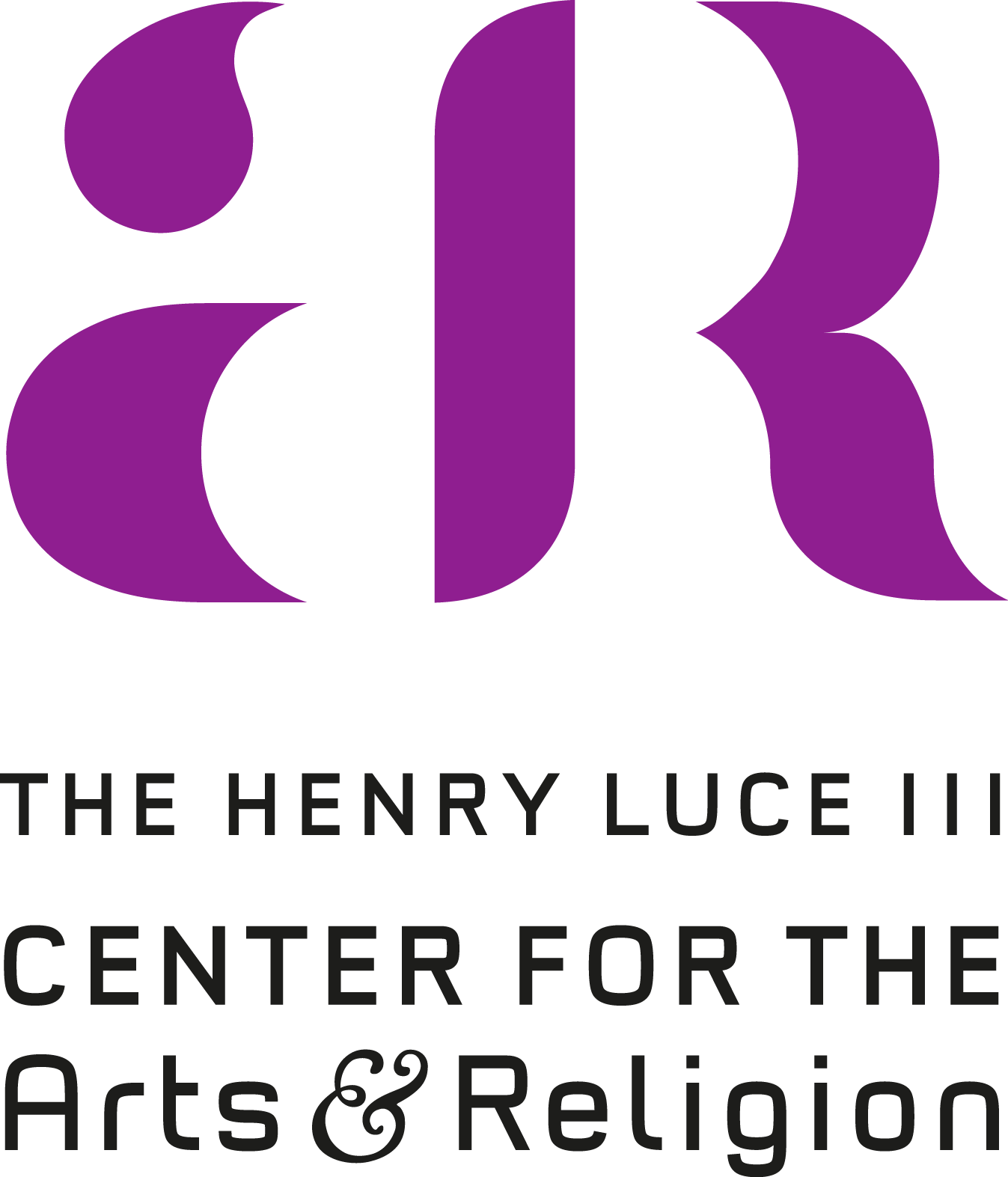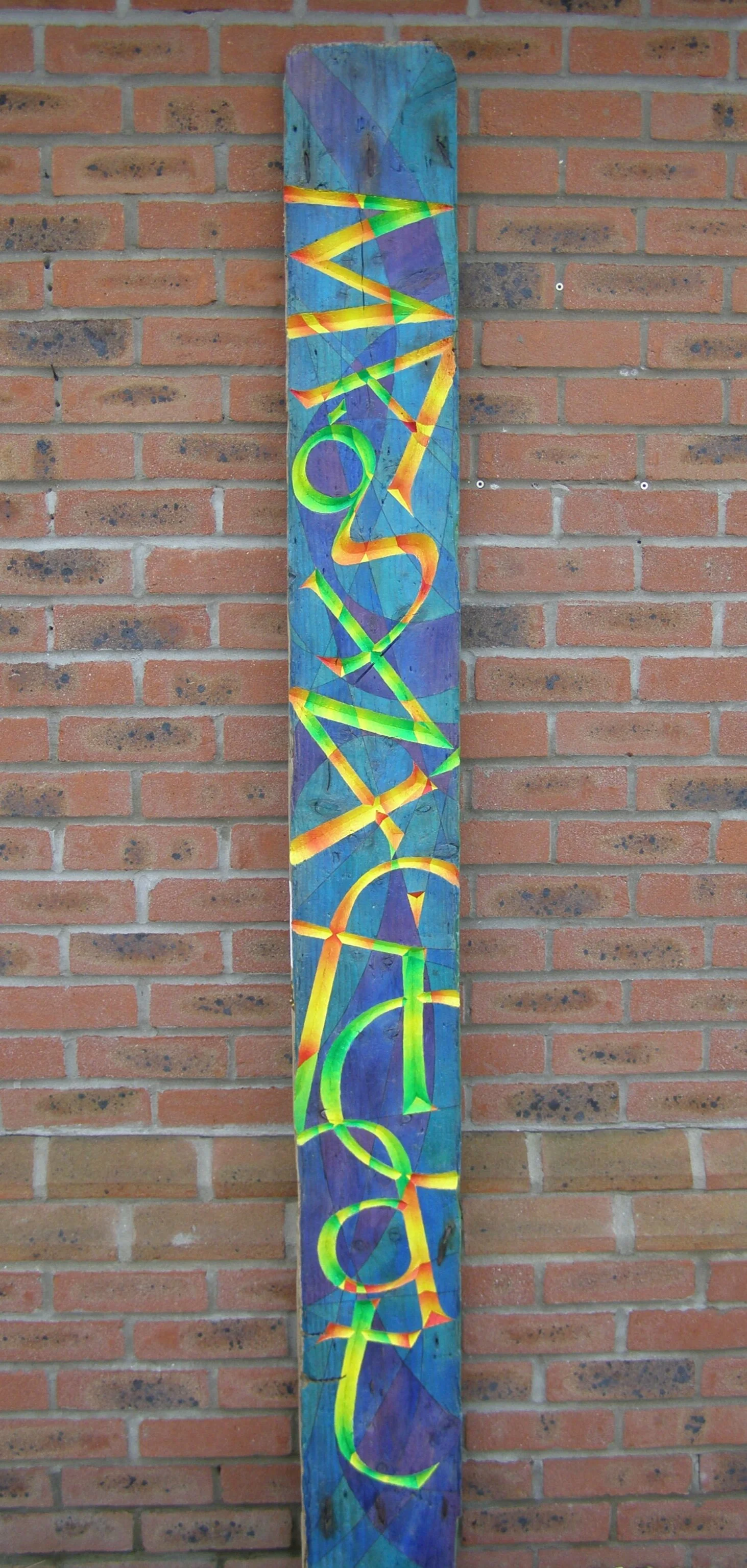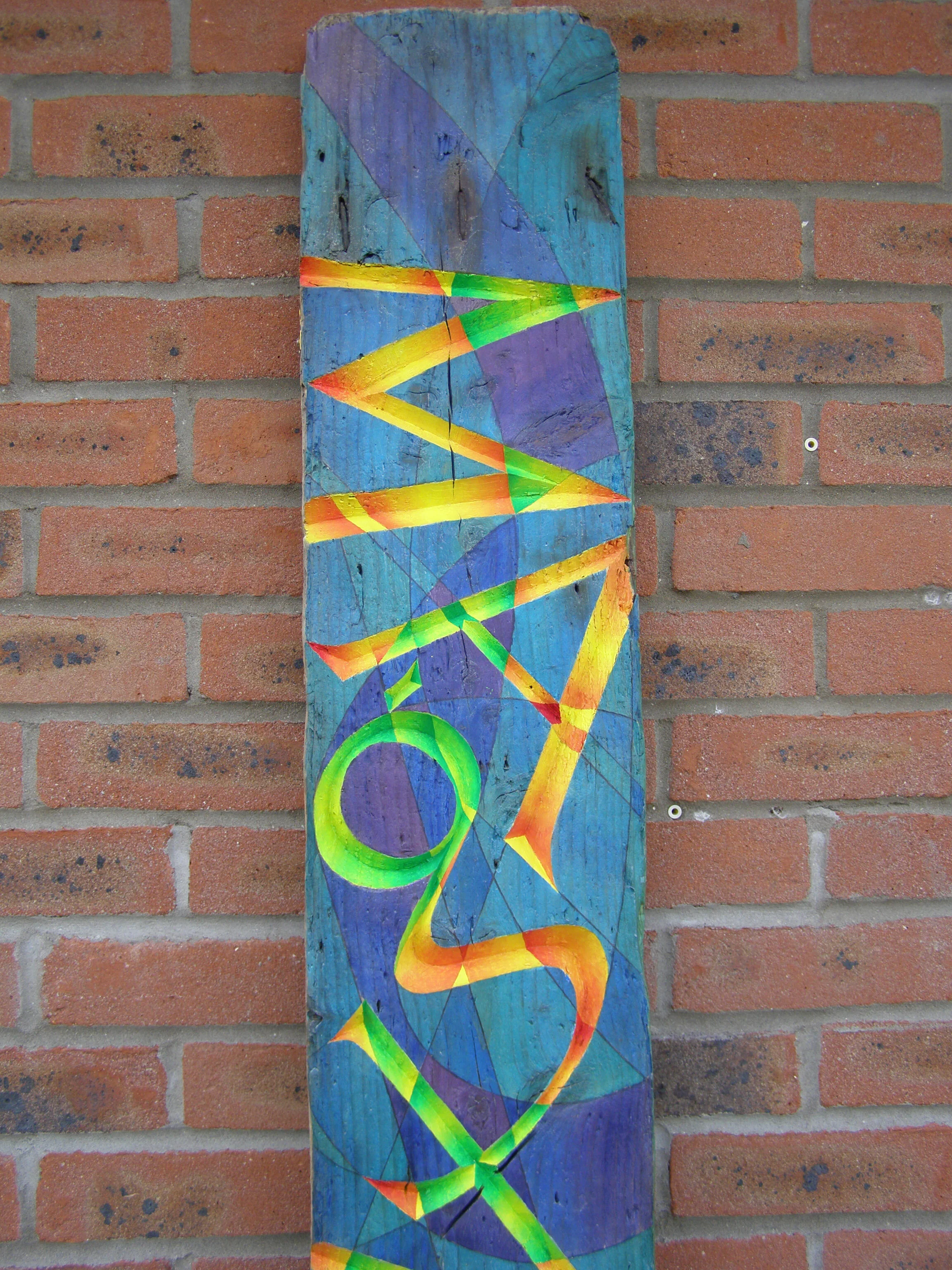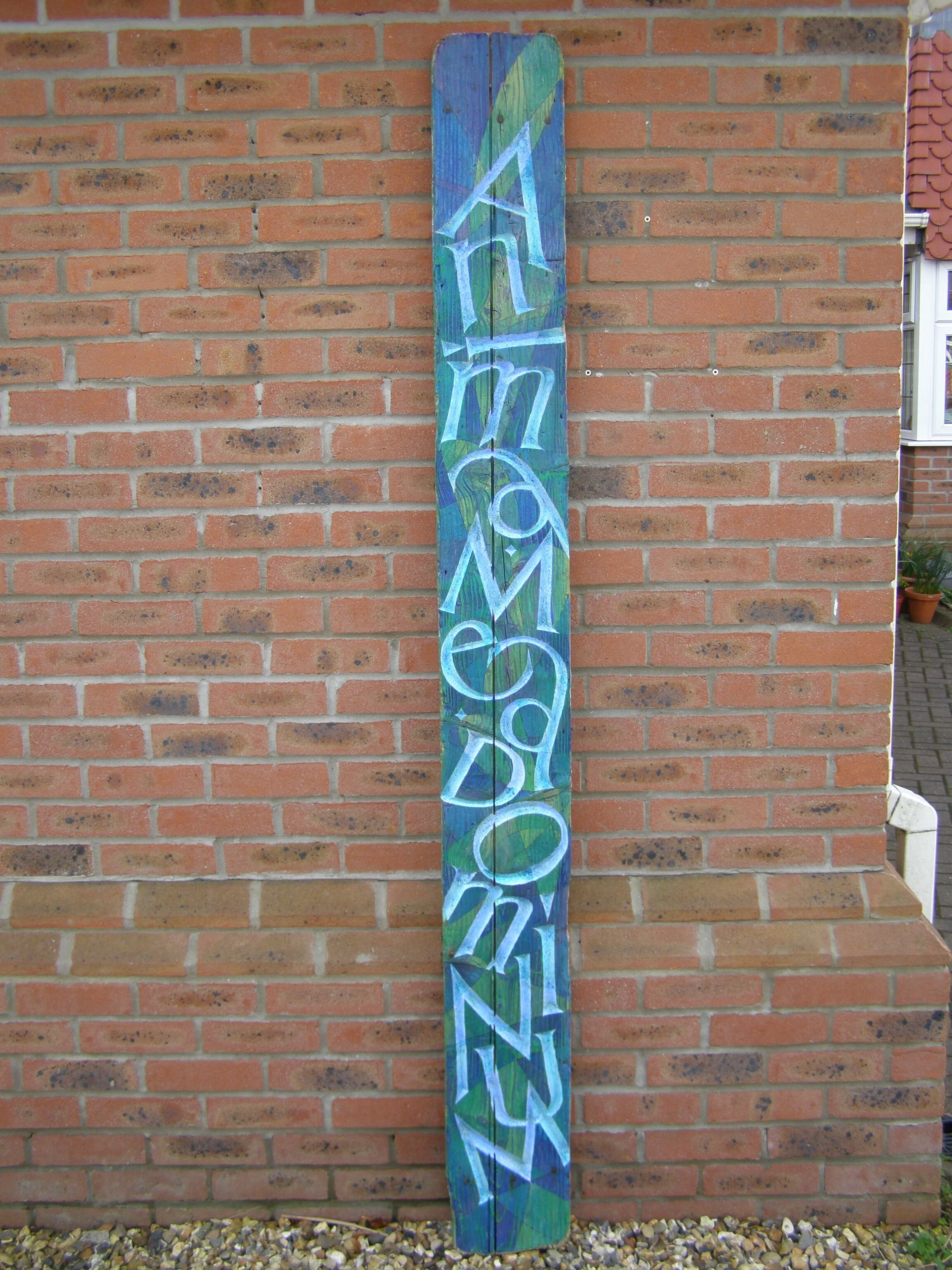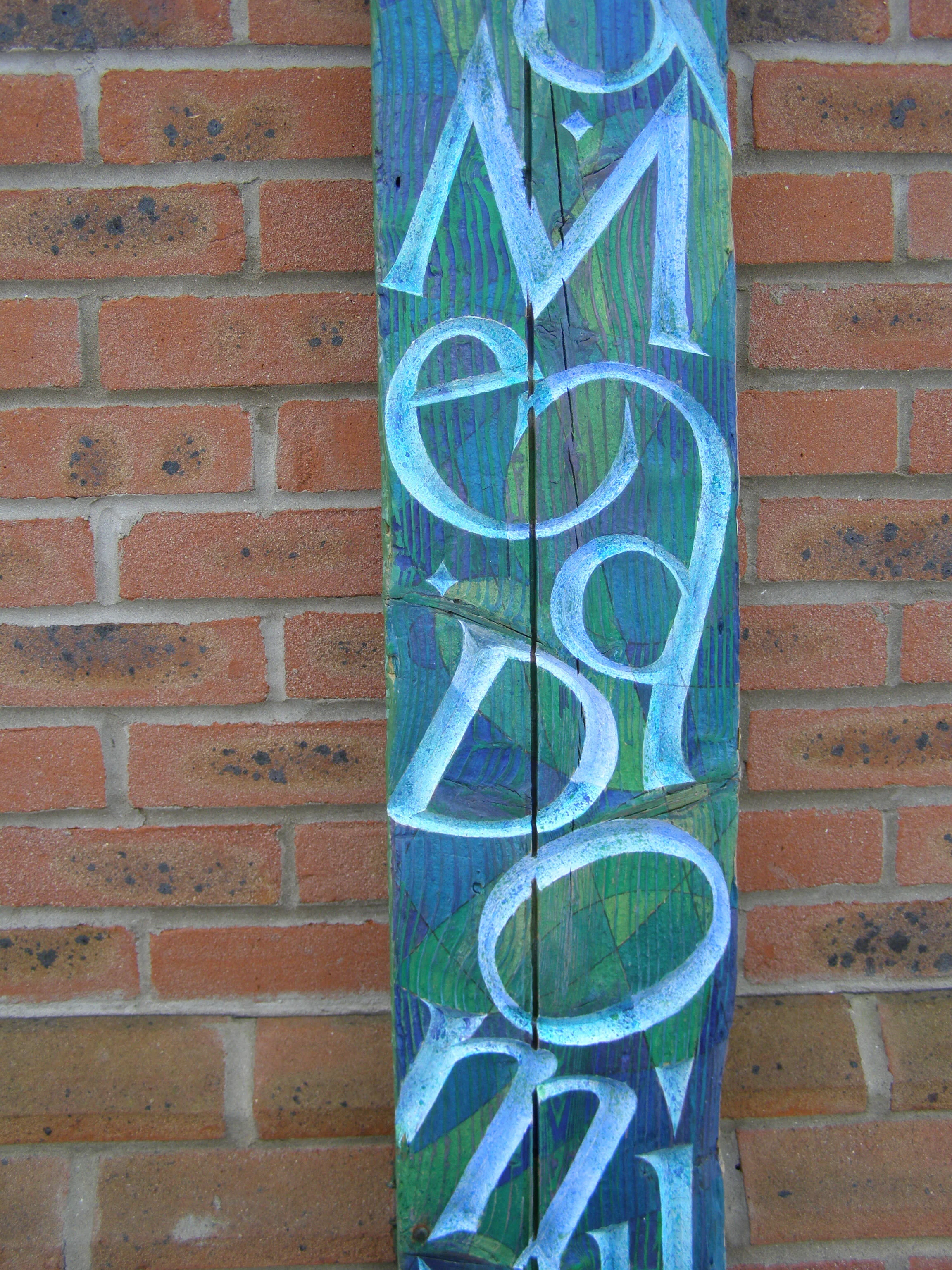Martin Wenham
Magnificat, 2008
84” x 8½”
Paint on wood
In Luke’s Gospel, Mary, the mother of Jesus, offers a song of praise to God when visiting her cousin Elizabeth (Luke 1:46-55). Mary opens proclaiming “My soul magnifies the Lord”—or, in the Latin Vulgate translation used in the medieval Catholic Church, “Magnificat anima mea dominum.” This hymn, typically called the Magnificat (“magnifies”), has been a staple of Christian liturgy for centuries. Martin Wenham has vibrantly painted and carved its enthusiastic words on wood, evoking the language’s musicality and political protest.
Wenham explains that the text of each side of this piece of wood is set at a different volume. The opening word, “Magnificat,” booms loudly. Its warm yellow, red, and lime green letters stand out against the cooler background of blues and teals. Just as Mary’s soul magnifies the Lord, so Wenham magnifies the letters: several of them extend beyond the surface, like the top of the ‘A’ and the right side of the ‘C’, like a petri dish’s contents under a microscope. On the back, the “anima mea dominum” is muted, softer. In this Wenham was inspired by Claudio Montiverdi’s setting of the Magnificat in his 1610 Vespers (see below), a collection of liturgical music for Marian feast days.
Wenham often makes sculptures with found wood scraps. After this six-foot-tall pine board washed up on shore, Wenham dragged it home. A closer look reveals a long crack on the back and smaller cracks on both sides. The corners are worn away. Nails and staples have rusted into the wood. Even with Jesus in the womb, the Gospel story points forward to its end: Jesus’ crucifixion, on wood, with nails. By lettering in bright colors on well-worn wood, Wenham juxtaposes Mary’s vibrant prenatal joy with her sorrow at Jesus’ death. He further alludes to the death by including words from a medieval Latin hymn on the cross, Crux Fidelis, on the side of the board.
For me, the aged wood and bright colors evoke a quite contemporary lettering aesthetic: bold graffiti on aged urban walls. Much graffiti art is art of protest, anonymous statements with maximal exposure. Similarly, Mary’s Magnificat is a protest against the unjust powers of this world, a reminder that God sides with the oppressed: “He has brought down the powerful from their thrones, and lifted up the lowly.” Just as Wenham uses this lowly discarded board as the vessel for a sacred text, so God, Mary says, “has looked with favor on the lowliness of his servant.” On multiple levels, Wenham plays with the meaning of this text and his setting of its in visual and material form.
—Homrighausen
Further Reading:
“Silent Voices,” a brief video on Wenham’s work
Wenham, Martin. Silent Voices: The Letter Art of Martin Wenham (Uppingham: Goldmark Gallery, 2013). (This piece is catalog no. 10.)
Wenham, Martin, and Peter Halliday. Martin Wenham: Language Visible (Uppingham: Goldmark Gallery, 2001).
